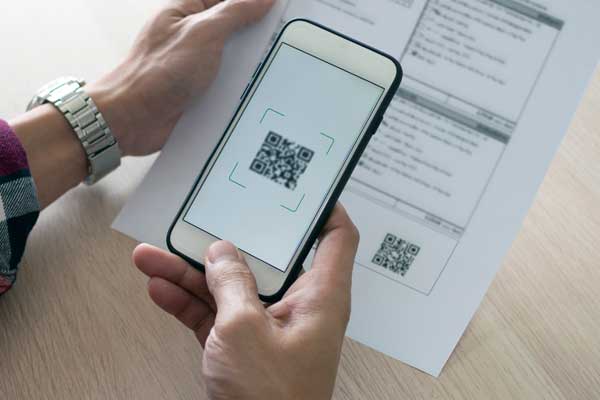Humans have been on this planet for millions of years (our best estimate indicates around 6 million!) and during this time, the way in which we communicate has changed drastically.
From drawing on cave walls and the development of language to where we are now with technological advancements allowing us to communicate in a multitude of ways, the evolution of communication from ancient to modern times is not only vast but also incredibly interesting.
The very first humans may not have had the luxury of complex language, as it is believed that their means of communication involved using hand signs or gestures, acting, dancing and noises, such as drums, whistles or vocal sounds like grunting or changing pitch.
Modern-day human communication was initiated with the origin of speech, which began over 102,000 years ago (as sources suggest). However, as you can imagine, speech and language during these times held many imperfections, so people found it easier to communicate via symbols. This resulted in the birth of cave paintings.
The oldest known cave painting can be found in Maltravieso cave, Cáceres, Spain, which is over 64,000 years old. The painting appears to depict a pig-deer (which is a creature over 35,000 years old) and a hand.
Next came the introduction of petroglyphs, which are rock carvings created by pecking directly into the stone using a chisel. It took about 20,000 years for homo sapiens to move from rock paintings to these carvings.
Then, at around 9000 BC, pictograms were introduced. A pictogram is a symbol that represents a concept, object, activity, place or event. (This is actually something we still use today as things like road signs and no-smoking signs are pictograms).
Finally, pictograms evolved into ideograms, which are graphical symbols that represent an idea. For example, a pictogram of a circle could represent the sun, but not concepts like ‘heat’, ‘light’, ‘day’ etc. An ideogram was able to convey more abstract things such as these by using more intricate symbols.
One thing that all of these forms of communication have in common is that they were bound by time and many of them were temporary (not like today when almost every form of communication leaves a trail). A lot of them could also only be carried out during sunlight and they couldn’t travel very far, if at all.
There were various forms of contemporary writing systems written around the Bronze age (3300 BC) and shortly after in the Egyptian times (3200BC), which we now know as hieroglyphics. These systems heavily focused on the use of symbols. However, it wasn’t until 1700BC that the first alphabetic system was introduced, which consisted of 22 symbols taken and adapted from hieroglyphics.
This evolved massively over the past 4000 years, with variations being created and further adapted along the way. Vowels weren’t invented until 750BC and phonics (a way of teaching children how to read and write) didn’t come about until 500BC.
Sources suggest that it wasn’t until the 16th Century AD that the modern English alphabet, with 26 letters, was adopted. It is believed that the letters V and U were separated, with the former becoming a consonant while using U as a vowel and the letter J was also added in. The development of the English alphabet had influences from the Semitic, Phoenician, Greek and Roman scripts.
The introduction of the alphabet meant that people were able to write down their messages and send these to one another- thus inventing the letter.
The first-ever letter was sent around 500BC and was handwritten but the Persian Queen Atossa, according to the ancient historian Hellanicus. It is thought that Atossa was 50 when she wrote her first letter, however, there are no records of its contents.
The invention of the letter meant that the adaptation of communication accelerated due to the fact that it showed the world how easy and convenient communication could be, resulting in more progress being made in the past 2500 years, than the 100,000 before that!
From those handwritten beginnings with Queen Atossa's pioneering correspondence, the evolution of sending messages has been remarkable, culminating in the streamlined efficiency of modern print and post services that businesses rely on today to connect with their audiences.
From pre-electric forms of communication, such as newspapers and morse code, to telegraphs and phonographs, humans quickly adapted to be able to communicate with one another on a wider scale. However, it was the introduction and advances of technology that resulted in new, more creative, solutions being invented, some of which are explored below:
The landline phone was introduced in 1876 by Alexander Graham Bell. By 1900 there were nearly 600,000 phones in Bell’s telephone system and this number rose to 2.2 million phones by 1905. Now, in 2022, there are over 884 million fixed telephone line subscriptions worldwide.
In 1920, the first radio news program was broadcast by station 8MK in Detroit, Michigan. But before this, in 1908, Lee de Forest took a break from his honeymoon and climbed the Eiffel Tower to broadcast a selection of music to the Parisian suburbs.
There are now over 600 registered radio stations in the UK alone.
Then, in 1926, television was publicly demonstrated for the first time, allowing TV companies to communicate on a vast scale, with the use of imagery.
One thing that may surprise you is that the patent for the first-ever version of the fax was issued in 1843, meaning it was created before the telephone. However, despite its creation in the 19th century, the fax machine wasn’t commercially available until 1926 and it wasn’t until almost 40 years later until the first modern fax machine was launched.
Created by Alexander Bain, fax machines provided people with the ability to copy documents in one location and print them out in another. It allowed its users to send communications almost instantly, even if they’re thousands of miles apart.
It wasn’t until 1984 that the first hand-held phone was invented, which was by the company Motorola. The DynaTAC was affectionally known as ‘the brick’ and only allowed its users to call one another. In 1992, the SMS was introduced, giving users the ability to type and send messages via their phones.
This quickly became the must-have accessory for the wealthy, which then spread to the general public, and by 2000 there were over 738 million mobile cellular subscriptions.
In 2000 the average person was sending around 35 texts per month, now the average person sends 72 texts a day.
The first rudimentary computer was invented by Charles Babbage in 1822, but it wasn’t actually created and built until 1991! With the internet being created in 1983, it meant that the first computer had internet access to the World Wide Web.
Since then, we have had a treasure of online communication solutions to enjoy. From email to social media, chat rooms and much more, the computer and internet have made communicating so easy.
Despite our advances in technology, the one thing that has remained a consistent, reliable and proven form of communication throughout has been the letter. This has only evolved with the advances in technology, with solutions like hybrid mail combining the traditionality of sending a letter with a system that enables you to do so online.
There are many theories that one day the internet may crash or technology will fail us, and if this is the case, then we know that no matter what, we can always rely on the trusted letter!
Communication advances now mean we communicate more than ever- merely because it’s easy, quick and reliable. Every minute:
210 million emails are sent
15.2 million texts are sent
350,000 tweets are sent
4,000 people read yelp reviews
Over the years we’ve seen huge changes in how we connect with one another. Us humans have evolved as has technology, which enables us to send various different forms of communication. I don’t doubt that this will continue to be the case going forwards.
Get in touch to find out how you can continue to evolve your communications effectively with CFH Docmail.
References:
Who invented the Alphabet?
Where did writing begin?
The origin of the English Alphabet (and all its 26 letters)
Handwritten letters which made history
10 crazy fun facts about radio
List of oldest radio stations
How do fax machines work?
The invention of mobile phones
History of communication
Radio in the United Kingdom









